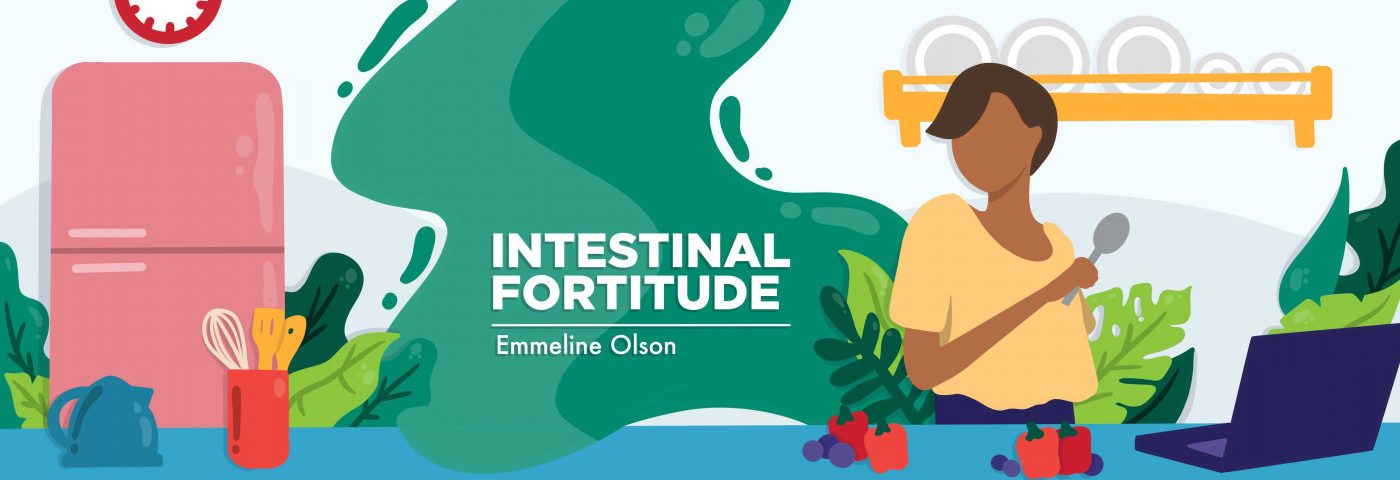After the toilet paper and hand sanitizer hoarding of 2020, I thought I was equipped for anything. By luck and God’s grace, I survived the winter storm disaster in Texas, or what locals are calling “SNOVID-21.”
Austin broke several long-standing weather records. We experienced 144 consecutive hours of subfreezing temperatures, setting four daily high and nine daily low record temperatures. We had five days with at least 1 inch of snow on the ground, with the total amount being the fourth greatest in the city’s history.
I was one of the fortunate few who never lost power, gas, or water service. My hardships were minimal compared to what others endured. However, my health needs caused different struggles and concerns.
Round 1: Winter weather anxiety
For 10 days, I anxiously watched the impending weather system head eastward from the Pacific. Meteorologists predicted the freezing weather would arrive on Wednesday, Feb. 10. Any hint of sleet or ice could delay my Remicade (infliximab) infusion that Thursday, and my second Moderna COVID-19 vaccine in San Antonio on Friday.
The heavy rain began Thursday morning. With temperatures hovering around 31 F, ice coated every surface except the pavement. I drove cautiously to the infusion center, especially after a sheet of ice slid off someone’s hood and shattered on the road ahead of me.
Midway through my treatment, another patient discovered her house had lost power. My husband, Patrick, called to tell me the lights went out as he ate lunch at a restaurant behind his office. Every time I refreshed Austin’s power outage map, a different swath of the city turned red.
The infusion center lost electricity shortly after my nurse hooked up my saline drip. Fortunately, I was the last patient. I finished my infusion with battery backup running the IV pump and blood pressure monitor.
On Friday morning, the sound of our neighbor’s tree limb cracking and crashing into our backyard woke me up around 7:30. Across the city, frozen branches and power lines further impaired electrical systems. I wasn’t worried about icy roads because highs in Austin and San Antonio would be in the low 40s, with little chance of precipitation. Nevertheless, we left extra early for my vaccination appointment so we could take our time.
Although the roads were drivable, an accident left us stranded on a one-mile stretch of I-35 for almost two hours, making me an hour late for my appointment. After spending seven hours in a cold car, I was relieved to return to our warm house.
Round 2: Winter Storm Uri
On Saturday, Winter Storm Uri trekked toward Texas, bringing frigid temperatures. We went to bed with all the faucets dripping. We had no idea we would leave them running all week.
The sleet that began to fall on Sunday night turned into snow. We awoke Monday to 7 inches carpeting the ground. Unlike on Jan. 10, when we had a freak 3 inches of snow, nobody was outside playing in the single-digit temperatures.
The next two sunny days wouldn’t affect the snow-covered roads. I rescheduled my Tuesday appointment for monthly bloodwork. Because delivery trucks were immobilized, I made sure Patrick didn’t need refills on his medications. Also, with rolling blackouts and parts of the city going 72 hours without power, several pharmacies remained closed.
Round 3: Winter Storm Viola
Our situation deteriorated quickly as Winter Storm Viola dropped more snow and sleet on Wednesday. Gas lines were in danger of freezing. Utility companies gave conflicting information. The Electric Reliability Council of Texas, which operates the state’s electric grid, urged customers to conserve energy by not running large appliances like dishwashers and dryers. However, water companies suggested customers run dishwashers and washing machines at night to move warm water through the pipes.
After burst water mains and inoperable water sanitation plants left millions without water, city leaders pleaded for residents to stop dripping faucets despite subfreezing temperatures. The city enforced emergency water use restrictions until it could restore water service and build up supplies to normalize water pressure.
When our faucet stream became a trickle, I envisioned collecting snow to flush the toilet. As a Crohn’s patient, not having a working toilet is worse than not having toilet paper.
My panic grew when the city issued a boil water notice. Because of my liver transplant, I needed bottled water to drink and brush my teeth, and we were running low.
The great meltdown
When temperatures finally inched above freezing on Friday, the desperate braved icy roadways in a mad dash to buy groceries. The long lines and bare shelves were direr than the early days of the pandemic.
Store inventory is improving, but people remain without power and clean water. While temperatures have returned to normal, our lives are far from it. Texas only has three months to recover and prepare for the threat of tornado and hurricane seasons.
***
Note: IBD News Today is strictly a news and information website about the disease. It does not provide medical advice, diagnosis, or treatment. This content is not intended to be a substitute for professional medical advice, diagnosis, or treatment. Always seek the advice of your physician or other qualified health providers with any questions you may have regarding a medical condition. Never disregard professional medical advice or delay in seeking it because of something you have read on this website. The opinions expressed in this column are not those of IBD News Today, or its parent company, BioNews, and are intended to spark discussion about issues pertaining to IBD.

